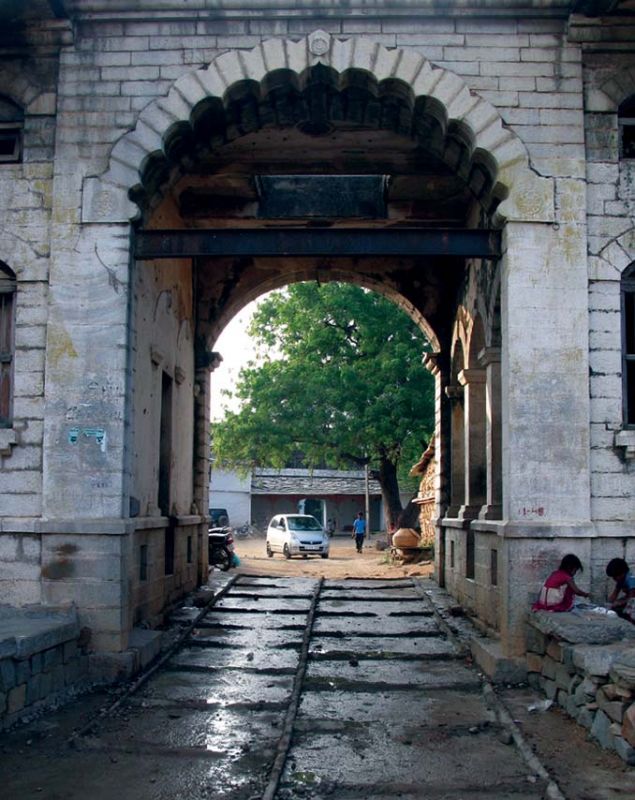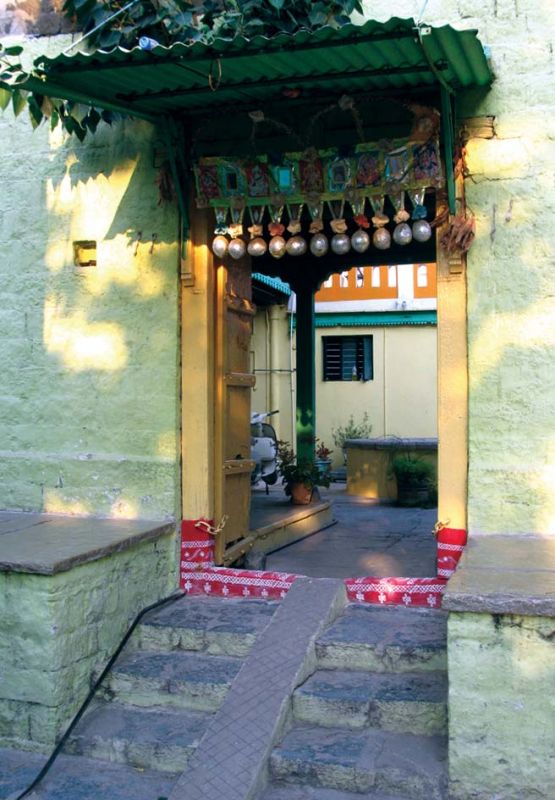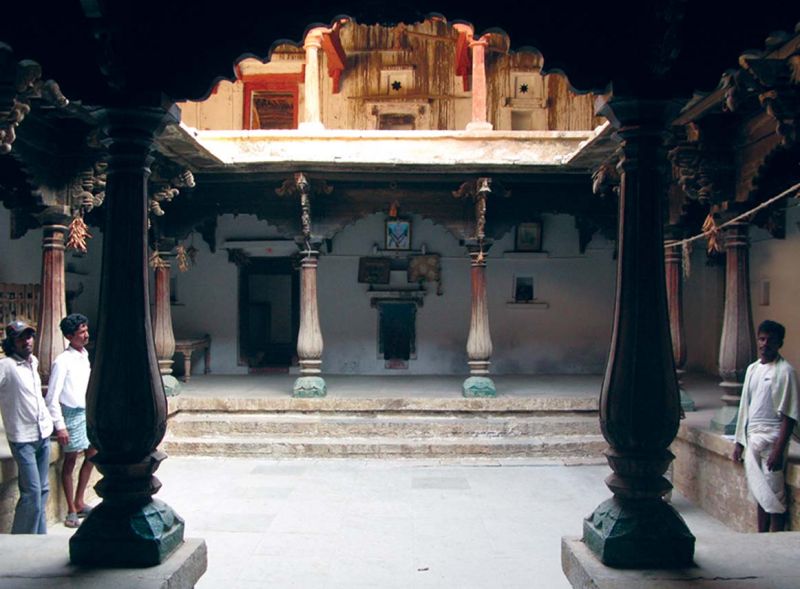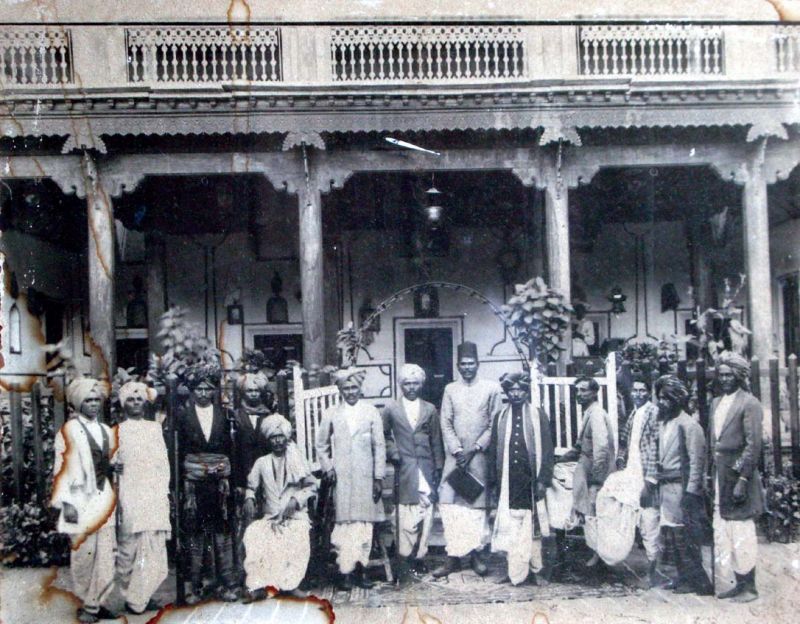A walk on the wade side

There was a time when the wealth of emperors and royals knew no bounds and they could give wing to their imagination and construct the grand palaces and palatial residences of their dreams. And one of the erstwhile princely states of the country where one can find such architectural marvels is the empire of the Nizam of Hyderabad, founded in 1591 by the fifth Qutub Shahi ruler. Under the Nizams, Deshmukhs, Desais, Nadagoudas, Police-Patils and Zahagirdars built palatial buildings known as Wades (pronounced as Vaadegalu) which were in some places as grand as palaces, as they led no less than princely lives. Writing in the nineteenth century, Major W.H. Skyes, the statistical reporter to the Government of Bombay, said that the Deshmukhs were for a district what a Patil was to a village. The Wades are also known as Sirimane, Mahals, and Gadhdhe in different areas. There are many Wades, especially in the present day districts of Hyderabad Karnataka region, which were part of the erstwhile Nizam state- Bidar, Kalaburagi, Yadgir and Raichur. Many of them, more than 100 years old, are now neglected and slowly turning into ruins all because of an apathetic administration which has hardly cared to turn an eye to the glorious heritage of a bygone age. In fact there are many who wonder why they could not be converted into luxury hotels and tourist destinations like it has happened elsewhere in the country. K.N. REDDY takes us through the history of Hyderabad-Karnataka to rediscover these Wades which still retain their quaint and pristine charm despite the vagaries of time
In the land of the Nizams, the Deshmukhs and Deshpandes who wielded enormous power, had large landholdings and wielded great clout over tenants and labourers. Barry Pavier says the Deshmukhs owned 2,000-3,000 acres at the lower end to 160,000 acres . So the wades they built were no less grand to match their enormous wealth. Kalaburagi district boasts of majestic wades at Kadaganchi, Nirgudi, Khajuri, Chincholi, Sedam, Chittapur, Chintapalli, Kodli, Garampalli, Nidagunda, Madana, Habala, Karadalli, Hosur, Andola, Korawar, Diggavi and other places.
In Kalaburagi City the Mansabdar Wade, Balghat Wade and Deshmukh Wades symbolise the splendid life led by their inhabitants during the 18th to 20th century. These majestic buildings with their unique style and exquisite architecture, are comparable to palaces as well as luxury hotels elsewhere. Some of these Wades, which are surrounded by forts with motifs around them, are spread over an area of eight to ten acres. Like the palaces had darbar halls, the Wades have spacious council halls where besides conducting court hearings related to administration, music concerts were also held. They also have separate enclosures for women as in many families, the pardah system was being observed then. In Dubulgundi village in Humnabad taluk, the Wade owned by Sharanappa Fatepur is very well maintained though it is around 150 years old.

The building spread over around one and a half acres has 30 rooms and 60 doors. What is most appreciable about the building is the splendid wood work with various types of wood used such as rosewood, teak and mahogany, imported from China, Burma and Sri Lanka. The building which is said to be the biggest in Bidar district, has been used for shooting many Sandalwood and also some Bollywood films.

At Mudnal village in Yadagir taluk, the Wade owned by former minister Vishwanath Reddy Mudnal's family is so big that it has around 90 doors! But unfortunately these buildings are on the verge of extinction now. The main reason for this is the abolition of the zamindari system, changing family system, and also migration of these families to urban areas. During those days those buildings were meant not only for the family but were also used for the upkeep of animals and to stock foodgrains. Moreover the families from grandfather to grandsons and great -grandsons all lived together. With a lot of revenue and also the cheap workforce that was available, maintenance of these buildings was not a costly affair then. But now this system has undergone a sea change.
Secondly, because of changes in vocation and the dwindling land holdings coupled with the erosion of interest in the hereditary farming system, the generations that succeeded these zamindar families are migrating to towns and cities in pursuit of education and also employment abandoning their profession as well as these grand buildings. Some of the families have shifted to single and double bedroom concrete houses as they are finding it extremely difficult to maintain the Wades.

Dr Mallikarjun Bagodi, Professor, Department of Visual Art, Gulbarga University, who has done an extensive study on Wades, feels that there is an urgent need to conserve these magnificient buildings. “In states like Rajasthan there are similar structures known as havelis which have been converted into heritage hotels. Similarly in Kerala, similar old homes have been turned into heritage buildings. These days the tourists movement is shifting towards rural areas instead of urban centres as the latter are overcrowded. The state tourism department should step in and take immediate measures to save these buildings which are not only unqiue but also splendid specimens of art and architecture. Otherwise they will be lost forever. Though they are private buildings, the Tourism Department should acquire them, renovate them and use them as guest house or heritage hotels.
“Similarly the Public Work Department can acquire them and use them as their guest house or office buildings. If these measures are not taken, the magnicient structures will be lost for posterity”, Dr Bagodi says.
Will the Wades spring back to life again infusing vigour and wealth into the lives of people of Hyderabad-Karnataka, now considered backward? Will tourist stakeholders realise the tremendous potential these ancient structures have to get the industry up and booming? Maybe what can do the trick is an initiative backed by state sponsored incentives. With the region having enough political heavyweights, this is no impossible task.

The lives and times of the Deshmukhs
‘Deshmukh’ was a historical title given to a person who was granted a territory of land in the Nizam’s territory. The deshmukh was in effect the ruler of the territory, as he was entitled to a portion of the collected taxes. It was also his duty to maintain the basic services in the territory such as the police and judicial system. This was typically a hereditary system. The Deshmukh system was abolished after independence in 1947 when the government confiscated most of their land. However some families maintain their status as real estate barons. It was similar in many respects to the Zamindar and Jagir systems elsewhere in India. However the title Deshmukh should not be associated with a particular religion or caste. Deshmukhis were granted to Deshashtha Brahmins, Chitpavan Brahmins, Marathas, LIngayats, Reddys, Jains and Muslims too. Despite changes in the political system, this hereditary institution survived, since no ruler wished to risk disturbing the local administration, headed by village officials.

